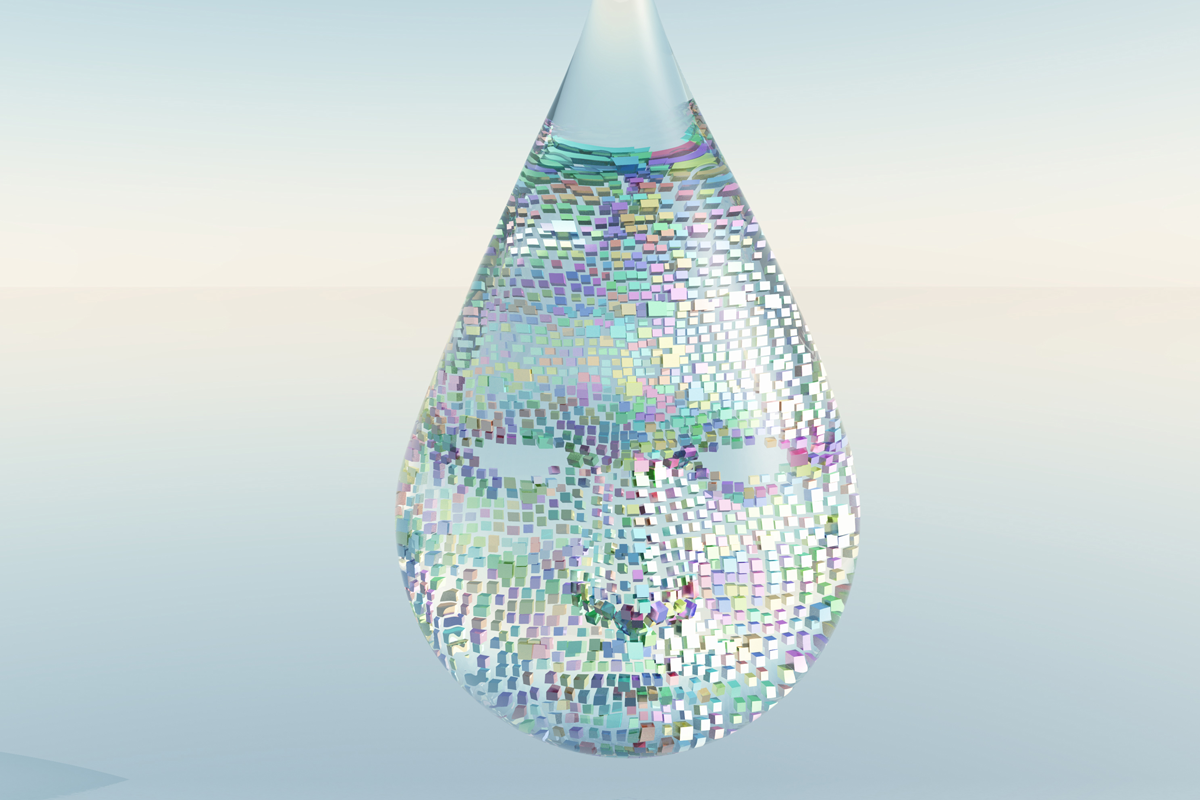The Mystery Of The Human Mind

One of the most confusing things, (or maybe not so confusing since we think we understand it and we really don’t) is the idea of cause and effect. On one hand, it seems simple. We see it happening all the time. It’s the one aspect of science we can get our minds around. After all, Newton allegedly saw an apple fall from the tree and wanted to know why.
Why?
Even this questions represents our need to know the cause of a seen or felt effect. Newton answered the effect of the apple with the why of gravity. It’s also interesting that same apple (well, not the apple) is the cause to the effect of us humans getting kicked out of the garden of Eden and having to work for assholes for a living.
Causation And Correlation
These are two words that belong in the realm of statistics, but they are known by every goof that wants to sound smart online. “Of course, correlation does not mean causation,” we say wisely while stroking our chins. This, of course, is absolutely correct. But where we go wrong is when we assume causality where none exists.
Tons of Anti Causality Examples
Everybody has their favorite example to demonstrate situations where correlation exists but to assume causation would just be silly. There is a strong correlation between the time my alarm clock rings and when the sun comes up, but I assure you my alarm clock does not cause the sun to come up. Nor does the sun coming up cause my alarm to go off. Because that one time I forgot to set it, it didn’t go off and I was late to work.
This Goes Much Deeper

But our common human misunderstanding of cause and effect goes much, much deeper than witty Internet comebacks and often repeated examples of alarm clocks and sunrises. In reality, there are far fewer incidents of cause-effect than we realize. Even the structure of our understanding is tinted with cause effect language where none exist, as we shall see later.
Why So Much Confusion?
Evolutionary psychologists tell us that way back in the day of hunting and gathering (where every day was a literal struggle to survive) thinking fast was better than thinking slow. And the way the mathematics of evolution work, you only need to have a very slight advantage to have a trait eventually take over the population.
Evolution Example
Let’s say a caveman is born with Trait X. And because he’s got Trait X, his kids have a ten percent better chance of surviving. Evolution is essentially a replication contest. Whatever living thing (including us humans) can make the most copies of itself will be around. Since all of us living things are competing for resources, whoever can replicate the most will eventually win out over those that don’t replicate so much.
Evolutionary Math
This works both within species and between species. So the cave guy with Trait X (and all the other cave dudes who happen to have Trait X) will have, on average, ten percent more kids that live long enough to pass on Trait X to their kids. Now, it doesn’t make much sense to say one guy will have ten percent more kids than other dude. But if you’ve got a hundred or thousand guys, then it starts to make sense. Let’s say there are a thousand guys without Trait X, and each of them have three kids. Each of the kid has a eighty percent chance of reaching adulthood.
That means that twenty percent of those three thousand kids (3 kids for each of the thousand caveman and woman) or six hundred kids will die before puberty. But the guys with Trait X have kids that have a ten percent higher chance of surviving. That means kids from Trait X parents will only be culled by three hundred. 2700 kids (Trait X) vs. 2400 kids (no trait X) for the first generation.
After a thousand or so generations, everybody will have Trait X, and nobody will not have Trait X. The numbers above are just a very broad and unrealistic estimation, but that’s generally how the game works. With only a slight advantage, any beneficial trait will quickly spread through the population.
Better Safe Than Sorry

Those evolutionary psychologists believe that ascribing a cause-effect connection where none existed would be a benefit to primitive humans who needed to think and react quickly. Even if there was no cause-effect connection, and the caveman was utterly wrong, it would only take one time out of ten to act slowly and die, to keep that “check and see what the deal is” gene out of the gene pool.
Quick And Wrong Is Better Than Slow And Correct
The cavemen and women who ran away and asked questions later lived to fight and hunt another day. Those that didn’t, got eaten. If you’ve seen the movie, “The Ghost And The Darkness,” demonstrated this with great clarity. They were building a railroad in Africa. A couple of lions kept sneaking in and eating people. Looking out over the tall grass, it was impossible to tell the difference between the grass itself, and the lions.
Imagine this situation, except nobody’s got any guns. Anything that might be a lion would make you fear for your life and run away. Even if you were wrong 19 times out of 20, you would live. If you wanted to wait and see, just to make sure, that one time out of twenty would get you eaten.
Cause Effect Origin
It’s this wiring in our brains that makes us see something (a certain movement in the grass) and assume that it means something (moving grass means a lion is out there). The path from primates to humans was long and slow. We have 98% of the DNA of chimps. Our social structures are very much like chimps. It’s very possible this cause-effect generator in our brains is millions of years old.
Baby Experiments
As illustrated by Stephen Pinker (source), plenty of experiments have been done on children as young as six months to demonstrate not only a cause-effect wiring in our neurology, but that we have other expectations of how the universe is suppose to operated.
Non Connected Blips

In one experiment, six month old toddlers were placed in front of a computer screen showing two blips moving around. Each blip was completely independent. Each were created by a separate program running a separate “blip moving algorithm.” When both blips were moving, the baby seemed happy. When both blips stopped, the baby seemed happy. When one blip stopped and the other continued, the baby’s expression changed to “WTF!? This doesn’t make any sense!” and showed clear signs of frustration.
Researchers concocted many other tests, all of which demonstrated (or strongly suggested since this was all done by interpreting the babies’ expressions) that when a presumed cause-effect link had been broken, it caused visible frustration.
So, We Assume Cause Where None Exists. So What?
From a scientific standpoint, it is very difficult to prove cause and effect. To demonstrate scientifically, that A indeed does cause B, you have to do many, many experiments under many, many conditions. You have to make A happen under a whole bunch of conditions and show that B happens as a result, every single time.
You have to do everything you can to show that B happens ONLY WHEN it is preceded by A.
More Variables, More Problems
We can see how nearly impossible it is to prove beyond a scientific doubt that A causes B. Since it is difficult they generally have these things called confidence intervals added on. Meaning they are “reasonably sure” that A causes B, but not absolutely certain. But even this requires tons of testing. But when you add in some other variables?
Medical Research
Medicine and Science really don’t belong together. In science, you do research by separating variables however and whenever possible. However, when doing medical research on live people, it’s impossible to separate variables. They can put people in groups, and watch them closely for several years as they live their lives, but all they can do is come up with correlations, not definitive causative effects.
Smoking Causes Cancer
The powerful tobacco lobby was able to keep that warning off cigarettes for this very reason. Since they felt they would lose a lot of money if the FDA made them put, “Smoking Causes Cancer” on a pack of cigarettes, their main argument was, “We’re not putting that on there unless you can prove it.”
Just for the sake of argument, how, exactly could you do that? If you were doing the study on mice it would be easy. Find two thousand genetically similar mice. Put them in identical situations, but have half of them breathe clean air, and there half breathe tobacco smoke a percentage of the time.
If ten percent of the smoke mice got cancer, and zero percent of the non-smoke mice got cancer, you might have a case. Might? What if the smoke in the air made their eyes watery, and that caused stress, and there was an unknown relationship between mouse-stress and the food they were eating that caused the cancer?
Human Studies Only Lead To Linkages

Any statement of “A and B” in human studies can only be said to be correlated, meaning every time one happens, the other happens. Just like my alarm clock and the sunrise.
What Statistical Significance?
A recent news headline made the rounds online. A study found that people who worked out had a significant increase in clogged arteries compared to those who didn’t. But if you did the digging (which took about three links to find the actual study with the actual data (here ), what did you find?
People who worked out every day for twenty years had a coronary disease of eleven out of a hundred. 1.1 out of 10. Those who didn’t work out had a rate of ten out of a hundred, or 1.0 out of 10. But since the standard deviations were so tight, that 1.1 out of 10 was considered to be statistically different from that 1.0 out of ten. In statistics they say this is statistically significant. Which means when you summarize the findings, it can be stated like this:
People who work out have a significantly higher rate of coronary disease than those who don’t.
But the word, “significant,” doesn’t mean the rate is significantly higher, it only means it’s of statistical significance, when comparing two means and their standard deviations.
Dig A Little Deeper

But think of what that study says. The people who worked out every day (more or less) for twenty years had coronary disease at a rate of eleven out of a hundred, compared to ten out of a hundred of those who didn’t. So even if there was causation (and not merely correlation) this would imply that if you work out every day for twenty years, your chance of getting coronary disease will go from ten out of a hundred to eleven out of a hundred.
Many Other Variables
What did those guys who worked out every day do besides working out? Nobody knows. This means that there very well could be another variable that is related to working out (or a desire to work out) that may have an affect on the outcome (which is an extra chance of 1 out of 100 of getting coronary disease).
Why Do They Do It?
Why spend so much money on these studies that really don’t mean anything? Because doing research is big money. If you can create a headline that screams working out means you’re going to drop dead, you cause a lot panic. This means you can convince the goofs in congress that you really need a few million more dollars to study this horrible thing. Do we really believe the corrupt morons on congress are going to read deeply enough to understand what’s really going on?
If you wanted to make a good living as a researcher, this is how you’d do it. First, you need to think of a study that is relatively cheap to perform, one you have an idea can lead to potentially startling results. Then you hire a publicist to promote these startling results. Then you apply for more grant money, using these now popular startling results as a reason that this stuff is very important and needs further research. If you get a couple mil, you’re good.
Tall People
(source )
One recent study was very clever. They watched people walk toward each other on the sidewalk. Their “research” showed that shorter men seemed to move out of the way of the taller men much more often than the other way around. Now, this is totally obvious. You wouldn’t expect it to be any other way. But they somehow spun this simple idea into some groundbreaking research that deserved attention in mainstream news.
Research Is Big Business

There is plenty of money to be had if you are a clever researcher. All of it is dependent on our common human tendency to see cause and effect links when none exist. Especially when people have some assumptions between the two things that are being connected. Sure, nobody would give me any grant money to research which alarm clocks have the biggest impact on the sunrise. (Although you never know!) But take two things that are hot topics, put together a clever grant proposal showing they might be related, and you’ve got yourself a research team!
Deeper Issues
Now, this may make you a bit miffed as a tax payer. In fact if you take a look here, you may get a laugh at all the ways researchers have gotten money out of governments. But after all, we all know what’s really happening, right? However, this cause-effect issue goes deeper than many realize.
Recap Cause Effect
The problem is so old that it even has a name in Latin. Namely, cum hoc ergo propter hoc, which means we think because one things happens after another, the first thing caused the second thing. This is where all superstitions come from. We wear a red pair of underwear and have a good day. So we imagine that our red underwear is the cause of our good day. But as mentioned above, it goes much deeper.
What Is Science?
These two events that happen sequentially can be two separate descriptions of the same thing. But if one description contains language sounds “scientific,” we believe the second, “scientific” description is the explanation (a mental cause) for the first explanation.
Gravity

If I held my keys at my side, and released my fingers, they would fall to the ground. That is a description of what is happening. If I asked why this happens, a reasonable answer would be, “gravity.” A smart, logical, educated person would say:
The keys fell to the ground because of gravity.
But what is gravity? It is a force of attraction between objects that have mass. You put two objects near each other, and they move toward each other. Suppose back in the day, Newton and his buddies did all kinds of experiments, and found out this force of attraction was dependent on the size of the two masses. And after a whole bunch of other experiments (watching the stars and planets) they came up with a “law” of “gravity.”
What Is Gravity, Really?
In reality, gravity is another description of what is happening. It is a precise, mathematical description, but it is a description. Two objects move toward each other. We’ll call this gravity. But why, exactly, do two objects move toward each other? Gravity doesn’t really explain anything. It describes what we see in detail. It describes what we see so much we can predict with extreme accuracy what will happen next. Gravity is the what, it is not the why. It is really just a very precise, and scientific explanation for saying the same as, “when I let go of my keys, they fall to the ground.”
Cause Effect Hallucination
But because it seems like a much different explanation, and it comes later in time (cum hoc ergo propter hoc) we assume it is a reason. A reason for something is very much like a cause. A causes B. Be happened because of A. The reason for B is A. But in the case of “gravity” and “when I let go of my keys they fall to the ground” they are both the same thing.
It Happens Because It Happens
So in reality, when we say, “my keys fall to the ground because of gravity,” it’s really the same as either saying, “my keys fall to the ground because my keys fall to the ground,” or “gravity exists because gravity exists.”
Hey Doc, Why Does My Stomach Hurt?
Let’s say you wake up with a stomach ache. You feel a sharp pain in the lower part of your abdomen. You don’t know what it is. So you go the doctor. She sticks a camera down your throat to take a picture of the inside of your stomach. After a few uncomfortable minutes, she starts nodding her head.
“I see,” she finally says, pulling the camera out. “You’ve got Ulcerative Colitis,” she adds.
“Jesus Christ dude! That sounds horrible! Am I going to die?” You ask, terrified.
What just happened in this example? Is what she said, (Ulcerative Colitis) the cause? It is the cause of the pain. You had a pain and you didn’t know what it was. But what is Ulcerative Colitis even mean? Ulcerative is an adjective. It describes a noun. The noun is found in the “Colitis” which itself is a noun with an adjective ending. Colin is the part of your body. Any time you see an “itis” on the end (tendonitis, tonsillitis, etc.) it means “inflamed.” Or swollen and painful. What is an ulcer? It’s defined as an open sore on the inside our the outside of your body. So Ulcerative Colitis means you’ve got an open sore on your inflamed colon.
Reframe This Silly Exercise

Suppose you scraped your arm. And it hurt (duh). So you went to the doctor and said:
“Hey doc, my arm hurts.” And the doctor looked at your arm and said,
“Yes, I see the problem, you have a scrape here, see this part of your skin where the blood is sort of leaking out? It’s not supposed to do that. Here, let me put a band-aid on it,” he says.
“Should I do anything?” You ask.
“Nah, it will heal by itself,” the doctor says.
“You mean like magic?” you ask, joking.
“More or less,” the doctor says, shrugging his shoulders.
How is this different than the official sounding “Ulcerative Colitis?” Not much really. It is just a very scientific description of what you already know. That you’ve got a pain in your stomach. The doctor just gave it a very specific name.
Seriously?
If you doubt this, do your research on any medical condition you like. You’ll find plenty of scientific names for symptoms, which usually, when broken down into common language is the body part combined with some kind scientific term that means “broken,” or “hole” or “swollen,” or “abrasion.” If you keep digging, (looking for the cause) you won’t find much. They’ll tell you who it usually happens to. When it usually happens. What the treatments usually are. But if you sift through enough jargon to get to the cause, you’ll find many words like, “believe,” or “suspect,” or other word that really mean a guess.
So, What’s The Meaning Of All This?

It could be that our brains aren’t really meant to be scientific devices. Meaning we aren’t meant to sit around and ponder all of the causes and effects in the world. If you assume that’s our purpose, then we have to conclude we suck at it. Perhaps our real purpose is to be goal seeking organisms. That we only really need to understand any potential cause-effect relationships insofar as they help us get what we want.
Trial And Error Learning
If you had to sit on the sidelines and wait until you had full scientific proof that you knew what was what before making a move, you’d be waiting a while. Instead, consider just trying something and seeing what happens. This model, that allows for continuous trial and error learning, doesn’t really require we get a scientific understanding of what’s going on. Instead of worrying about what cause creates what effect, instead think of yourself as the cause, and everything else as the effect. And that your job is to create as many positive effects as you can.
At any point in history, there were probably plenty of smart people who believed they’d more or less figured everything out. Yet here we are, still muddling along and learning more stuff. Maybe the true nature of cause and effect, in a real, meaning of the universe way, is beyond what our simple monkey brains can contemplate. Once you get down in the world of Quantum Physics, relativity (where time itself, a vital component of the whole cause-effect idea, is flexible, not constant) the whole concept of cause and effect goes out the window anyway.
Perhaps we shouldn’t be looking for answers, we should be looking for easier ways to get better results. That way, we can always keep getting better, enjoying more results with more people.
Learn More

Mind Persuasion has tons of books and courses to help you apply all kinds of clever mental tricks to more easily get what you want.
Mind Persuasion Books
Mind Persuasion Courses